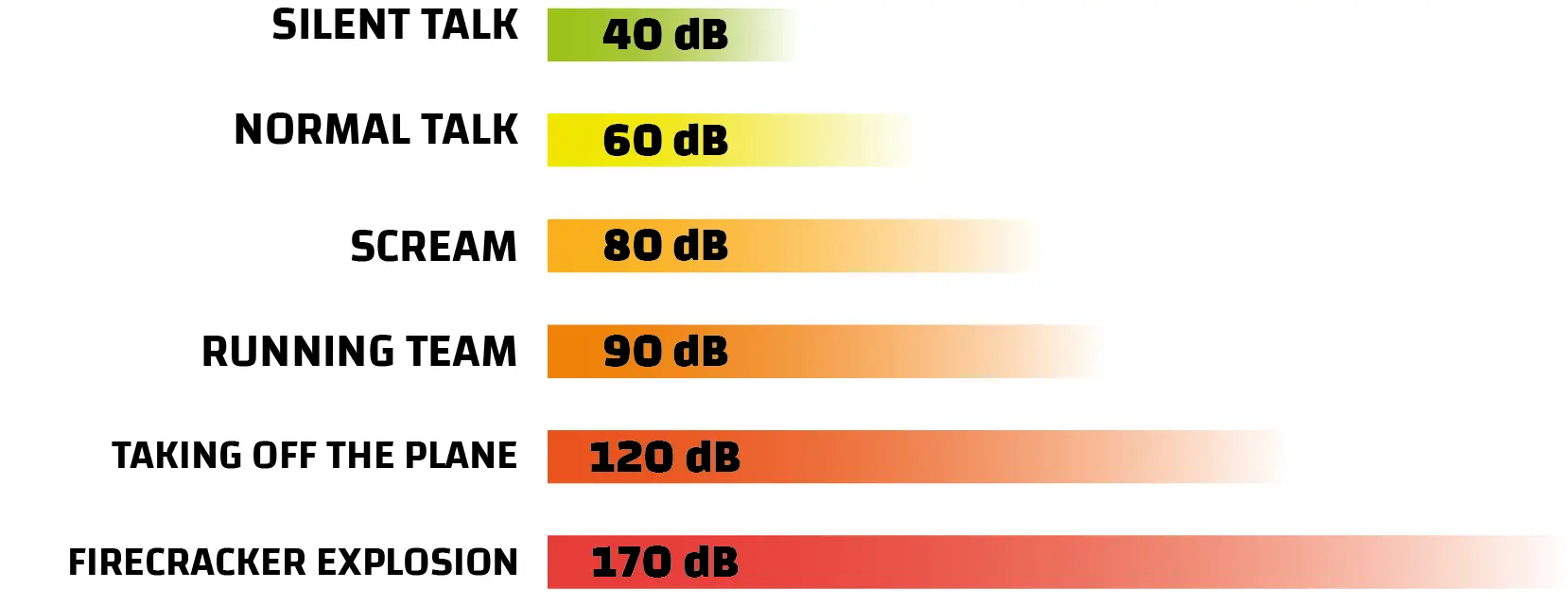Log in
Customer account
Log in
Incorrect email or password.
Registration is not confirmed
The account is blocked
Registration is not approved
Activation e-mail has been sent to Your e-mail
Failed to send activation e-mail
Basket


Hearing protection is an essential factor in maintaining our ability to communicate and enjoy the auditory side of life. Prolonged exposure to loud sounds can lead to irreversible hearing damage, which has a serious impact not only on our ability to hear, but also on our mental and social health.
Hearing is our constantly alert sense, affected by different levels of noise during the day and night. By noise we mean not only loud noises, but also less intense but annoying and distracting sounds, such as the ticking of a clock, which can interfere with our concentration. As well as causing an unpleasant buzzing in the ears, noise can lead to a range of health problems - from sleep disturbances, headaches, impaired physiological functions, stomach and intestinal problems, high blood pressure, weakened immune systems and complete hearing loss.
When choosing personal protective equipment (PPE) for hearing protection, it is crucial to consider the noise level in the workplace, expressed in decibels (dB). There are many ways to measure noise, from conventional noise meters to mobile phone apps. However, for the most accurate and professional measurements, it is best to contact accredited laboratories such as the Regional Sanitary Station or the National Institute of Health. You can usually find information about the noise levels emitted by your work tools in the manuals for these tools.
It is important to note that noise levels between 80 and 120 dB may not be immediately perceived as painful, which can lead to an underestimation of the risk of hearing damage. Damage is already possible with exposure to noise above 85 dB for an eight-hour shift, or with a single exposure to noise above 140 dB. Hearing cannot adapt to such impact noises, such as gunshots or loud bangs, which can lead to immediate and permanent damage, often associated with pain.
Examples of noise levels

From a noise level of 80 dB, hearing damage occurs with prolonged exposure. If the workplace noise exceeds this limit, the employer must provide workers with personal protective equipment to protect their hearing, and from a noise level of 88 dB onwards, workers are required to use this protective equipment.
At a noise level of 130 dB we have a pain threshold, from a level of 140 dB there is immediate deafness and a level of 160 dB or more can result in bursting of the eardrums.
Each 3 decibel (dB) increase in noise actually doubles the risk of hearing damage, while halving the time we can be safely exposed to that noise. This means that if it is safe to be exposed to 85 dB of noise for a full eight-hour shift, an increase to 88 dB (an increase of 3 dB) makes the safe exposure time only four hours. That's why it's so important to use personal protective equipment (PPE) to protect your hearing, because even a seemingly small increase in noise level can significantly increase the risk of damage.
Interesting fact: The highest noise recorded was the eruption of the Krakatoa volcano, which reached 310 dB and deafened most people within 160 km of the disaster site.
Using PPE is one of the best methods to protect your hearing in the workplace. The market offers different types of hearing protectors such as disposable earplugs, reusable earplugs, clamshell earmuffs, level-dependent earmuffs, communicators, etc.
When selecting PPE, we must pay particular attention to the correct attenuation. The ideal noise level we should achieve is 70 - 80 dB. At this attenuation level, we will achieve adequate protection, reduce harmful noise and maintain sufficient audibility in the event of triggered warning signals or instructions from colleagues. We must not over-attenuate so that we can still react to potential hazards in the workplace. As well as leading to problems in perceiving the environment, too much attenuation can also create a feeling of isolation.
Our catalogue lists the SNR - the attenuation value in decibels (dB) - for each hearing protection product.
Before using hearing protectors, it is important to check that they are in good condition and to train the user to use them correctly. It is therefore crucial to always read the instructions for use.

Roll the plug protector between your fingers into a roll without bends.

With your hand over your head, pull the ear and straighten the ear canal. Insert the earplug into the ear.

After insertion, briefly hold the earmuff in the ear until it unfolds.

Before entering a noisy environment, check that the earplugs are properly seated in the ears.
The earplugs should be removed from the ears with a slow twisting motion to gradually loosen the seal. In the event of incorrect use or insertion of PPE, attenuation may be reduced from the guaranteed attenuation value.
The choice of PPE depends not only on the noise level, but also on the type of noise and the duration of exposure:
We offer PPE with attenuation from 23 - 36 dB.
Dispensers and various packs of hearing protectors are also available.
Soubory cookie používáme ke shromažďování a analýze informací o výkonu a používání webu, zajištění fungování funkcí ze sociálních médií a ke zlepšení a přizpůsobení obsahu a reklam.
Soubory cookie používáme ke shromažďování a analýze informací o výkonu a používání webu, zajištění fungování funkcí ze sociálních médií a ke zlepšení a přizpůsobení obsahu a reklam.
Tento obsah může shromažďovat údaje o vašich aktivitách. Pokud si přejete zobrazit obsah je potřeba vyjádřit souhlas.
